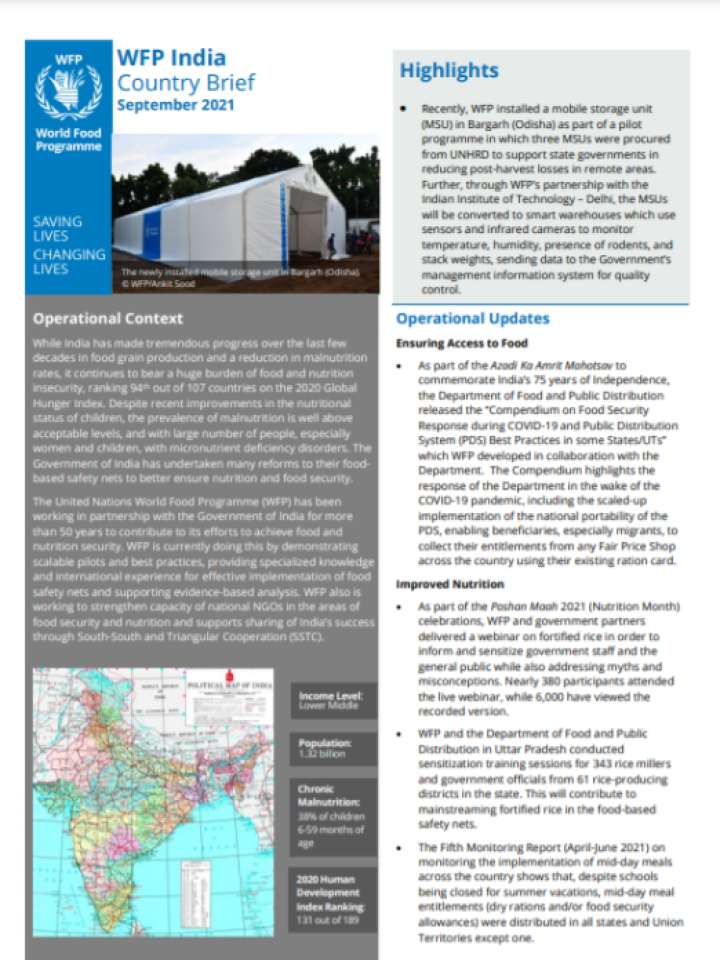World Food Program India country brief September 2021
This report summarizes the food security and agriculture situation in India in 2021. While India has made tremendous progress over the last few decades in food grain production and a reduction in malnutrition rates, it continues to bear a huge burden of food and nutrition insecurity, ranking 94th out of 107 countries on the 2020 Global Hunger Index. Despite recent improvements in the nutritional status of children, the prevalence of malnutrition is well above acceptable levels, and with large number of people, especially women and children, with micronutrient deficiency disorders. The Government of India has undertaken many reforms to their foodbased safety nets to better ensure nutrition and food security.
The report notes that the Department of Food and Public Distribution's scaled-up implementation of the national portability of the Public Distribution System, especially in the wake of the COVID-19 pandemic. The World Food Programme (WFP) also notes the continued commitment of the Indian government to improved nutrition as well as training for stakeholders, including agricultural workers and government officials. The National Institute of Disaster Management (NIDM)- WFP joint initiative on mapping and exchange of good practices for food security and nutrition in climate fragilities and disasters received 55 applications. This initiative aims to bolster climate change and disaster risk reduction. WFP also partnered with SPHERE India on September 1st to launch an e-learning course on “Gender, Protection and Inclusion in Food Security and Nutrition Programmes”. The course provides a comprehensive rationale and guidance on practical approaches for incorporating gender, inclusion and protection in programmes that address food and nutrition related concerns, particularly in the context of COVID-19.
Explore further
